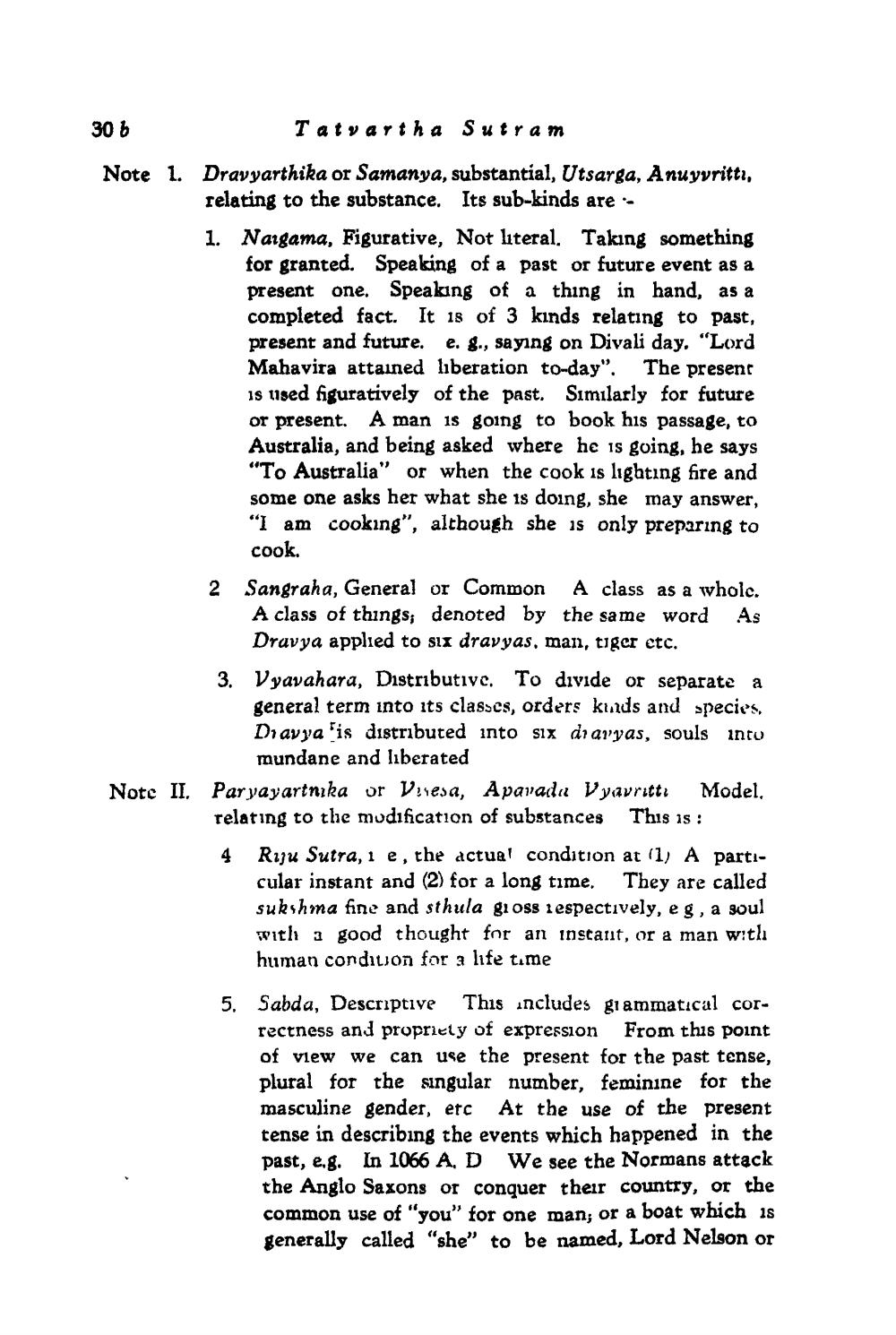________________
30 b
Tatvartha Sutra m
Note 1. Dravyarthika or Samanya, substantial, Utsarga, Anuyvritti, relating to the substance. Its sub-kinds are -
1. Naigama, Figurative, Not literal. Taking something for granted. Speaking of a past or future event as a present one. Speaking of a thing in hand, as a completed fact. It is of 3 kinds relating to past, present and future. e. g., saying on Divali day. "Lord Mahavira attained liberation to-day". The present is used figuratively of the past. Similarly for future or present. A man is going to book his passage, to Australia, and being asked where he is going, he says "To Australia" or when the cook is lighting fire and some one asks her what she is doing, she may answer, "I am cooking", although she is only preparing to cook.
2 Sangraha, General or Common
A class as a whole. A class of things, denoted by the same word Dravya applied to six dravyas, man, tiger etc.
As
3. Vyavahara, Distributive. To divide or separate general term into its classes, orders kinds and species. Dravya is distributed into six diaryas, souls into mundane and liberated
a
Note II. Paryayartnika or Visesa, Apavada Vyavritti Model, relating to the modification of substances This is:
4 Riju Sutra, 1 e, the actual condition at (1) A particular instant and (2) for a long time. They are called sukshma fine and sthula gross respectively, eg, a soul with a good thought for an instant, or a man with human conduon for a life time
5. Sabda, Descriptive This includes grammatical correctness and propriety of expression From this point of view we can use the present for the past tense, plural for the singular number, feminine for the masculine gender, etc At the use of the present tense in describing the events which happened in the past, e.g. In 1066 A, D We see the Normans attack the Anglo Saxons or conquer their country, or the common use of "you" for one man; or a boat which is generally called "she" to be named, Lord Nelson or




